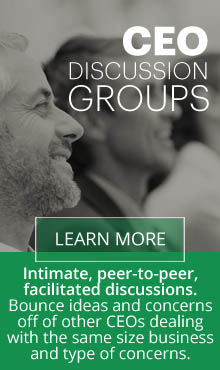 Nancy complains, “Why can’t they get their act together? This is so frustrating. The first person I talked to wasn’t even nice. The second person was much nicer but couldn’t make a decision. I got sent to a technician and got lost in their phone system. It turns out they don’t have the fix I need. Then when I try to return what I bought, it sounds like the person in accounting doesn’t even know what to do to give me a credit.”
Nancy complains, “Why can’t they get their act together? This is so frustrating. The first person I talked to wasn’t even nice. The second person was much nicer but couldn’t make a decision. I got sent to a technician and got lost in their phone system. It turns out they don’t have the fix I need. Then when I try to return what I bought, it sounds like the person in accounting doesn’t even know what to do to give me a credit.”
Has this ever happened to you? Not a pleasant customer experience.
Each organization’s moments of truth are when it touches each customer. Is the customer experience delightful, positive and successful? The whole point of all the company’s strategizing, structuring, systematizing, training, employment practices, service/product creation and testing, marketing and sales efforts, is to get that customer to buy and to buy multiple times. Most of us have heard that it takes 5 times as much money to get a new customer as a repeat customer. Also, we’ve heard that raising customer loyalty by 5% can increase profitability from 25-100%. So creating that positive customer experience (first time and every time) is the focus of everything we do when we build a business. Whether or not we’re thinking about ‘total customer experience,’ the customer is always thinking: Am I liking this? Will I stay? Will I come back? Is the product/service good? Is it worth the hassle if other parts of the experience are not good? Will I tell other people about my good/bad experience?
So if your organization’s total efforts are not leading to good customer experiences, you are missing the boat and leaving money on the table.
What goes into the Total Customer Experience?
Let’s look at Nancy’s complaint and the ‘moments of truth’ that are revealed. What does it mean ‘to get their act together?’
Emotional Connection – The first person wasn’t even nice. People buy from people they know, like and trust. If someone isn’t personable, caring and relating to Nancy as a unique human being, your company isn’t even getting to first base.
Empowered Decision Making – Too bad Nancy had to get passed around. It’s frustrating to get passed from person to person until there is finally someone who has any authority.. Companies who are recognized for their superior customer experiences empower the person who answers the phone to make most decisions. In order to make this happen, they recruit wisely and invest in developing their people to make good decisions, to buy into the company’s values and vision, to understand the customer’s needs, to gather feedback.
Infrastructure – The phone system, the staff’s capabilities using phone and technology, availability of information about each customer (customer relationship management), knowledge database, technology to track trouble tickets or complaints. This kind of infrastructure allows caring staff to do a better job with the resources they need. It allows for quicker troubleshooting and availability of information on a broader basis for more empowered decision making. It would have allowed Nancy to find out sooner rather than later that ‘the fix’ she needed wasn’t available. But even better it would collect information about how many customers were having the same issue so the company could create ‘the fix’ sooner and take the issue off the table.
Systems – If the accounting team had a documented system for handling returns and credits, and each person was trained in it, then Nancy would not have had such a terrible experience. In fact, if the process were really systematized and the infrastructure were in place, the initial person who took the call could have handled it himself.
These are just a few of the things that companies who manage the total customer experience look at. Of course, it all starts with leadership. Leaders who get their heads out of the sand and recognize the importance of the customer experience want to infuse attention to the customer experience as they do strategic planning, diagram the organizational structure, create systems and processes in all departments, design their internal reward and recognition structures, and recruit, develop and empower their personnel. That’s what Nancy’s comment about ‘getting their act together’ is really all about.

 Jeri Quinn from Driving Improved Results is an executive coach, management consultant, speaker and author who focuses on communication in her work with executives and companies. She is the author of The Customer Loyalty Playbook, 12 Game Strategies to Drive Improved Results in Your Business. With more than 40 years as a serial entrepreneur.
Jeri Quinn from Driving Improved Results is an executive coach, management consultant, speaker and author who focuses on communication in her work with executives and companies. She is the author of The Customer Loyalty Playbook, 12 Game Strategies to Drive Improved Results in Your Business. With more than 40 years as a serial entrepreneur.

